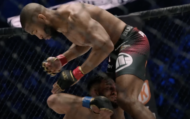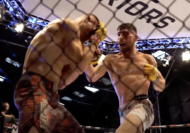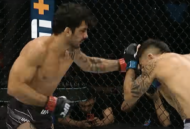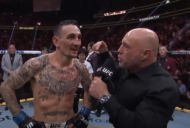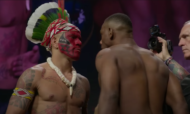Dr. Margaret Goodman Talks New Drug Testing Program
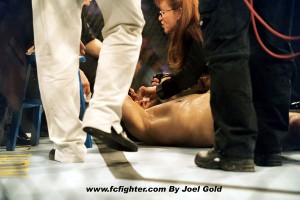
Former Nevada Athletic Commission ringside physican Dr. Margaret Goodman is spearheading the new Voluntary Anti-Doping Association to curb athletes' use of banned substances
By Neelang Parghi
In the last five years, the sport of MMA has witnessed failed drug tests from an array of fighters, ranging from pioneer Royce Gracie, to former UFC welterweight contender Thiago Alves, to The Ultimate Fighter alumus Chris Leben.
Last week, a shockwave was sent through the MMA world after it was revealed by the California State Athletic Commission (CSAC) that Strikeforce women’s champion Cris “Cyborg” Santos, universally recognized as the baddest woman on the planet, had failed a drug test submitted after her most recent brutal KO victory, a 16 second decimation of Japan’s Hiroko Yamanaka on Dec. 17.
A fighter caught using performance enhancing drugs (PEDs) can face fines, suspensions, and a cloud over their career which could follow them until retirement.
In Nevada, home of the UFC, fighters have to be licensed by the Nevada State Athletic Commission (NSAC) before they can fight. They’re required to submit several medical documents before licensing, including physical exam results from their doctor, an ophthalmological exam, bloodwork showing that they’re noncontagious for hepatitis B, C, and HIV, as well as MRI and MRA scans of the brain.
“Drug tests are done on the night of the fight 99 percent of the time” in Nevada, says NSAC executive director Keith Kizer. If a fighter has failed a drug test in the past, the fighter is required to submit a clean drug test with his or her future licensing medical documents.
In other instances, drug tests are randomly administered out of competition 1 to 2 months before a fight, when training is often at its heaviest. “If they’re going to cheat, it would be most detectable 1 to 2 months out. That’s probably when we’ll have them tested,” says Kizer. For relatively bigger fights, both pre-fight and post-fight testing will be done.
All drug tests in Nevada are done via urine sample. If the testing is done on fight night, then NSAC agents will collect a urine sample. For out-of-competition testing, the agents will have the fighter visit a pre-selected lab where testing will occur. When the test is required for licensing, the fighters own doctor will tell them to visit a lab, and either the doctor or the lab will send those results to the commission.
“We test for steroids, masking agents, diuretics, stimulants, and drugs of abuse, such as marijuana, cocaine, and pain killers,” Kizer said. “They’re all important, but the main focus is on steroids.” He adds that he would like to see tests of hematocrit (red blood cell concentration) levels at the licensing stage. Any significant increases could be evidence of blood doping or EPO usage.
One new drug testing initiative for fighters is the Voluntary Anti-Doping Association (VADA), which independently performs a wide range of tests and then forwards those results to the appropriate state athletic commission.
“Most athletic commissions do no drug testing at all. Other states or jurisdictions may not test for PEDS, just narcotics or stimulants” says Dr. Margaret Goodman, VADA president and former NSAC ringside physician. “Ones that do, such as Nevada and California, will take disciplinary action. There’s no standardization of medical testing or requirements. It varies such a great deal and that’s why the process is so confusing.”
VADA will allow fighters to register for their program about eight weeks before a fight. In addition to a battery of drug tests, including steroids, masking agents, EPOs, and blood doping, VADA also tests for shorter acting testosterone drugs that only remain in the system for a few hours.
In addition to drug testing, VADA also hopes to increase awareness of harmful substances among fighters. “With MMA and boxing, there’s little education out there. Too often, fighters are given all kinds of substances that are potentially harmful from a friend or trainer.”
In recent years, the NSAC has tested 600 to 1000 fighters annually, and only gotten 5 to 10 positive results per year. Of those positive results, only about half have been for steroids, according to Kizer. He says that this number has remained steady, while the number of fighters being tested has doubled compared to five years ago, meaning an effective decrease of 50% in positive results. Kizer credits this drop to a change in the public perception of drug use.
“The fiasco in baseball changed the minds of the public and athletes,” he says. “It’s not just having an edge, it’s cheating. It’s like jumping on a subway during a marathon.”


